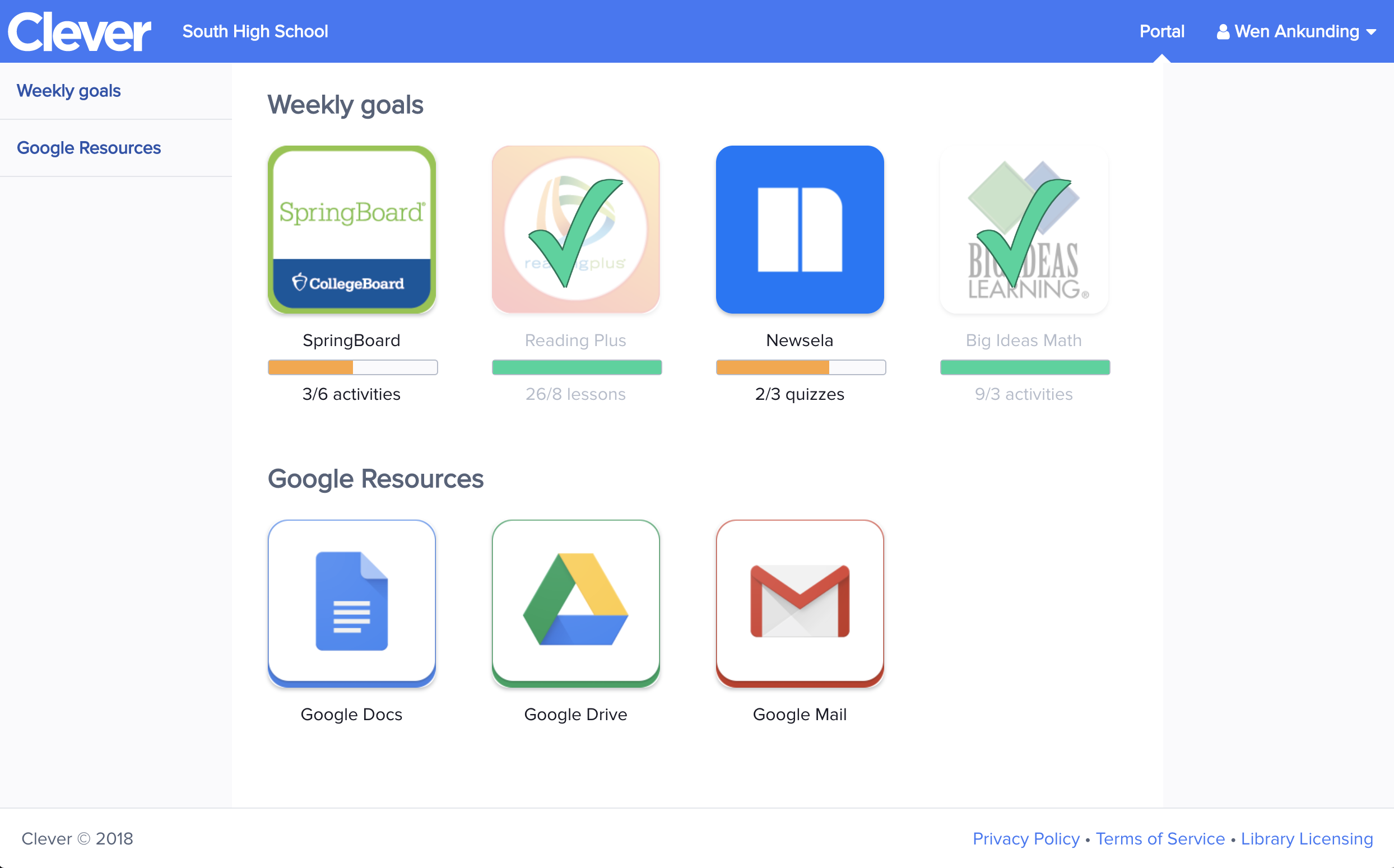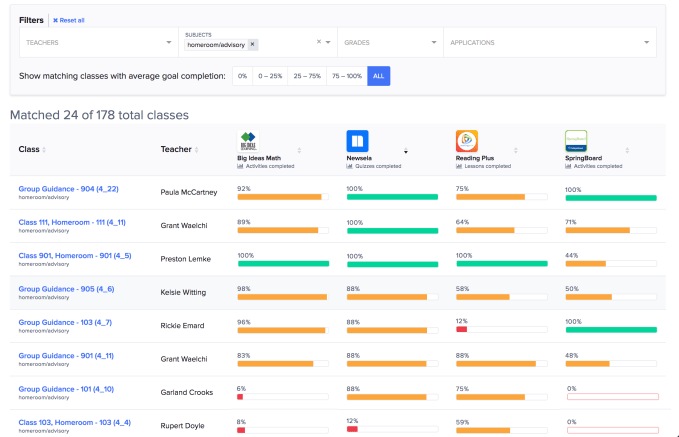The classic problem of how teachers should devote resources to their students, such as helping students that are struggling in specific areas, is one that’s still ever-present — but it needs a deceptively-simple approach to making that more manageable, even if it’s just a colored progress bar if Clever CEO Tyler Bosmeny gets his way.
That’s why Clever, a portal for educational tech tools that helps students and teachers log in and keep track of those tools, is looking to try to make that work by rolling out Clever Goals. It’s a tool that, in a way, boils down to a colored progress bar that helps give teachers and students a set of near-term goals that they might want to achieve by the end of the week, and gives teachers a way to identify where to invest their time in order to help achieve those goals. Clever researched usage from its apps across teachers, students, and even the wants of parents, and ended up with a kind of easy-to-use progress report in order to keep a constant tab on how students are doing.

“We’re focusing on marking it smarter for teachers in the classroom,” Bosmeny said. “You can an imagine if you’re a teacher, each one of 20 students are using different apps to learn, and you need to track how students are progressing across all the apps they use. All this data, it should be making things easier, but instead, it’s making it harder. It brings together all the usage data for all edtech products a teacher might be using in order to make it really easy for them to see all the usage that’s happening and set weekly goals and accomplish different things.”
As a student, instead of seeing the icons you would see in a portal, you’ll now see weekly progress bars. Those bars correspond to whatever goals a teacher has set — maybe doing a half hour of practice in a literacy app or reading, or something along those lines. The aim is to set near-term reachable goals and give them a set of cues that show them how close they are to completing those near-term goals.

Teachers then get an overview of which where students are on their goals within each segment. That gives them an idea of areas where their students need to catch up and where they are progressing quickly, helping them tune their curriculum or working with specific students that might need help on certain subjects. For teachers whose students are working through several different education tech problems, that gives them an opportunity to quickly see where to focus their efforts.
Part of the reason the actual product itself seems so simple is that it needed to be able to deliver actionable information in bite-sized bits for time-starved teachers and resources. That could simply boil down to the whole red-yellow-green look of a progress bar, but it’s that kind of way of delivering information that helps display a wealth of raw data in a palatable instead of a massive grid of spreadsheets or something along those lines.
“We worked pretty closely with a lot of districts,” Bosmeny said. “Many agreed to buy this product before it was even built. Everyone is struggling with this problem of data in this world where all this software is being used in the classroom. We built this hand-in-hand with districts, they see the need, and districts have been using this as we’ve been testing it.”
Another small change, he said, was that the company found that there was a lot of engagement through an email update on progress compared to through the web portal. Again, it came down to coming to work with teachers on their terms listening to their needs, a common theme among the general software world but one that increasingly needs to be applied to education. “A push instead of a pull has been really effective,” he said.
“Once students can get access to the software, now we can talk about using it smartly and effectively,” he said. “Two years ago, this wouldn’t have made any sense because the access problem wouldn’t have been solved. Teachers were struggling with 20 usernames and passwords. A very high-tech analytics goal-setting mechanism would’ve never gotten off the ground. We believe edtech has gotten to a state of maturity where schools are buying lots of software that’s proving to help kids learn if they use it in the right ways.”
To be sure, there will be plenty of challenges to getting this into the hands of schools. Bosmeny said the company has worked with plenty of districts, but cracking edtech is a notoriously hard problem, and there are a lot of different interpretations of the progress report (such as tools to deliver better feedback like Peergrade). But the goal is to replace that bi-semester piece of paper with something more robust, and Bosmeny thinks that is the way to get more teachers and students on board.
